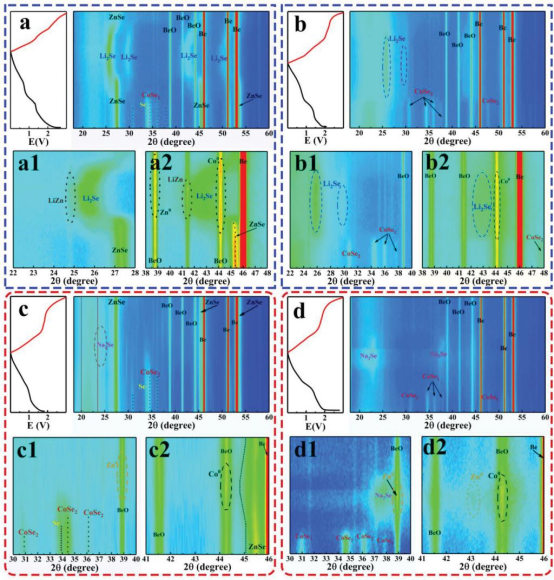Recently, the research group of Professor Wu Yucheng of the School of Materials Science and Engineering of our university has made the latest progress in the field of metal chalcogenides in alkali metal ion batteries, and related result“Synergistic Engineering of Architecture and Composition in Bimetallic Selenide@Carbon Hybrid Nanotubes for Enhanced Lithium- and Sodium-Ion Batteries”was published in the internationally renowned journalAdvanced Functional Materials

Under the national strategy of "carbon neutrality and carbon peaking", environmental problems and the shortage of traditional energy have greatly accelerated the exploration process of sustainable energy materials and technologies. Lithium-ion batteries are relatively mature in commercial use, but further improving their specific capacity and cycle life is still an important part of lithium-ion battery research. At the same time, in order to make up for the lack of limited lithium-ion battery resources, the development of high-performance sodium-ion batteries has become one of the important directions of China's new energy strategic layout.
Fig.1 Physical characterization of bimetallic selenide@carbon hybrid nanotubes with different selenization strategies
Fig.2 Electrochemical sodium storage performance of bimetallic selenide@carbon hybrid nanotubes based on a two-step selenization strategy

To this end, Associate Professor Cui Jiewu and Associate research fellow Yu Dongbo of Professor Wu Yucheng's research group have cooperated with Academician Sun Shuhui of the National Academy of Sciences of Canada to design a series of bimetallic selenide@carbon hybrid nanotube electrode materials for lithium-ion batteries and sodium-ion batteries on the basis of the mature MOF regulation strategy (Nature Communications, 2020, 11, 927). It is found that the selenization strategy has an important impact on the hierarchical porous structure and grain size of electrode materials, and the high temperature volatility of Zn plays a key role in regulating the micro-nano structure and composition of electrode materials.

Fig.3 In-situ XRD for electrochemical lithium/sodium storage mechanism analysis
As a result, the electrode materials obtained by different selenization strategies exhibit very different properties in lithium-ion and sodium-ion storage. The electrode materials optimized by the one-step selenization strategy showed high specific capacity (1328.3 mAh g-1@0.1 A g-1) and good rate performance (269.1 mAh g-1@10 A g-1) when storing lithium ions, while the electrode materials optimized by the two-step selenization strategy showed excellent cycling stability when applied to sodium ion storage (the capacity retention rate was 97.6% at 40000 cycles at 10 A g-1current density). At the same time, the authors used in-situ characterization technology to analyze the intrinsic differences and connections of electrode materials in the process of lithium/sodium storage, which is expected to provide new ideas for the design of electrode materials in different battery systems.
This research work was supported by the National Natural Science Foundation of China, the Natural Science Foundation of Anhui Province, the Key R&D Project of Anhui Province, and the Special Fund for Fundamental Scientific Research Funds of the Central Universities. Cao Zhongnan, a 2021 doctoral student in the School of Materials Science and Engineering, is the first author of the paper.
Paper Link:https://doi.org/10.1002/adfm.202306862
